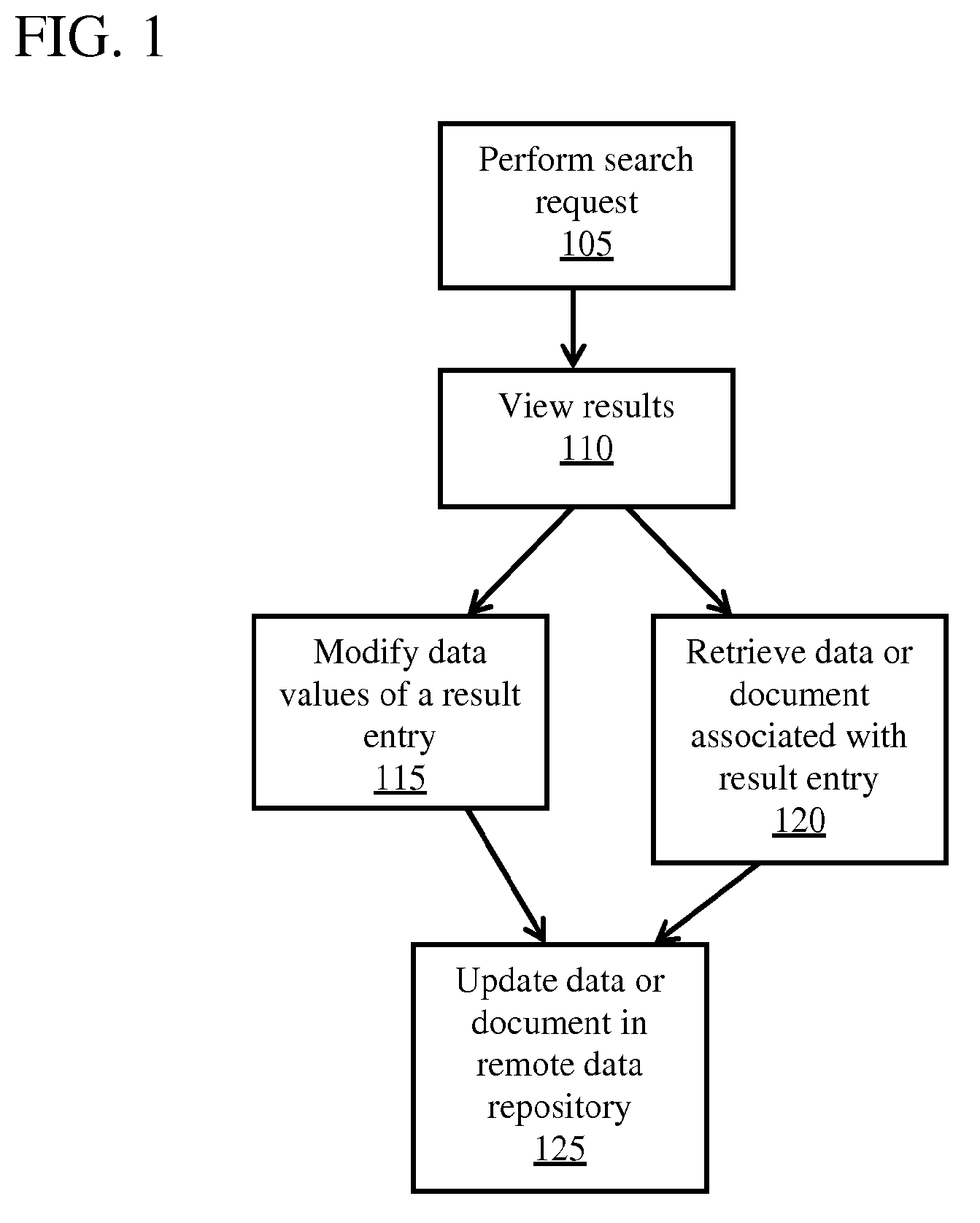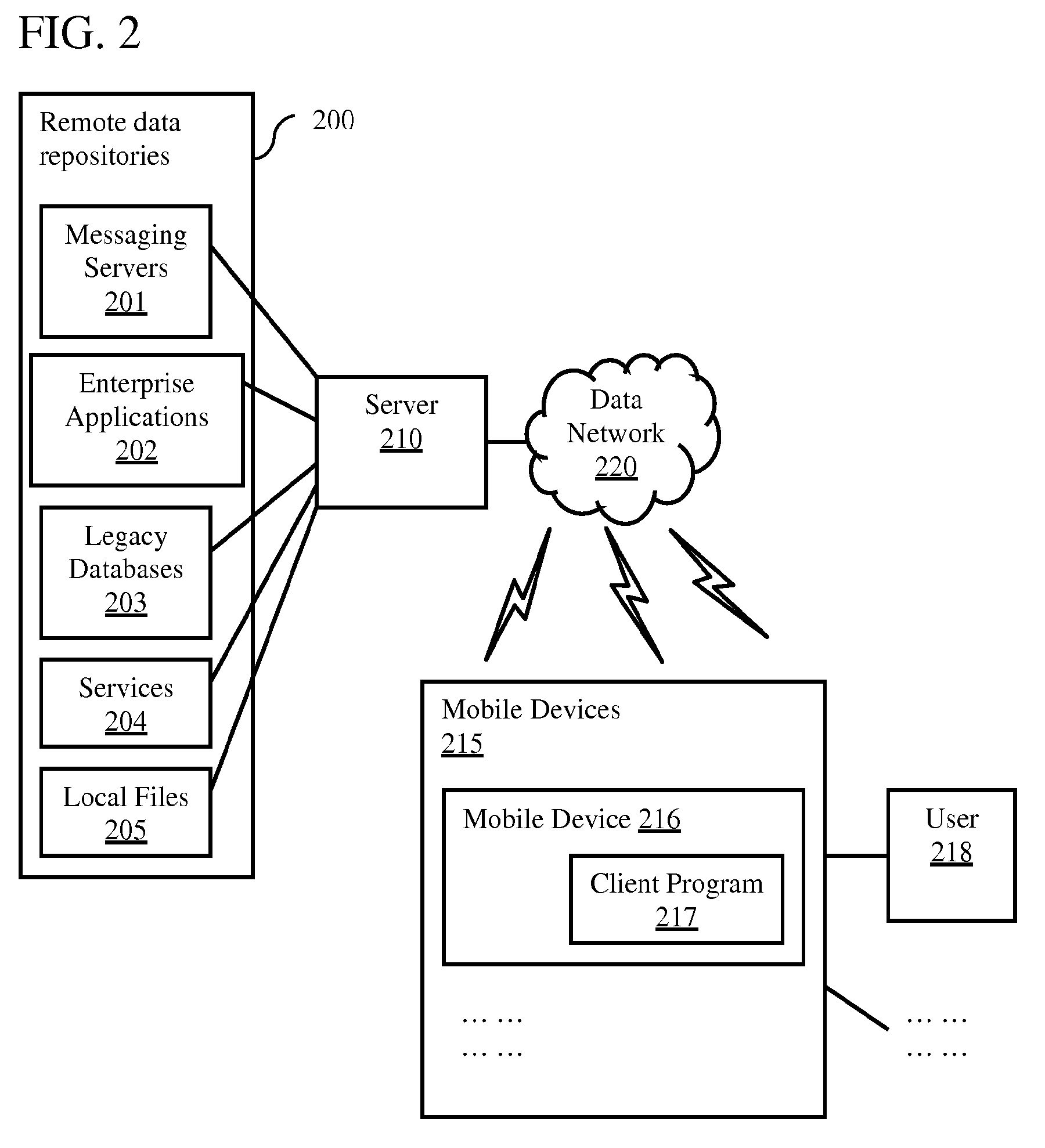Remote access of heterogeneous data
a heterogeneous data and remote access technology, applied in the field of mobile communication, information retrieval and data management, can solve the problems of poor data access, built-in word processor, and large amount of information stored in dissimilar systems, and achieve the effect of convenient and efficien
- Summary
- Abstract
- Description
- Claims
- Application Information
AI Technical Summary
Benefits of technology
Problems solved by technology
Method used
Image
Examples
Embodiment Construction
[0049]The following detailed description of the embodiments of the present invention refers to the accompanying drawings that illustrate these. Other embodiments are possible and modifications may be made to the embodiments without departing from the spirit and scope of the invention. Therefore, the following detailed description is not meant to limit the invention.
[0050]It will be apparent to one of ordinary skill in the art that an embodiment of the present invention, as described below, may be realized in a variety of implementations, including the software, firmware, and hardware of the entities illustrated in the figures (i.e., messaging servers 201, data network 220 and mobile devices 215). The actual software code or control hardware used to implement the present invention is not limiting of the present invention. Thus, the operation and behavior of the present invention will be described without specific reference to the actual software code or hardware components. Such non-...
PUM
 Login to View More
Login to View More Abstract
Description
Claims
Application Information
 Login to View More
Login to View More - R&D
- Intellectual Property
- Life Sciences
- Materials
- Tech Scout
- Unparalleled Data Quality
- Higher Quality Content
- 60% Fewer Hallucinations
Browse by: Latest US Patents, China's latest patents, Technical Efficacy Thesaurus, Application Domain, Technology Topic, Popular Technical Reports.
© 2025 PatSnap. All rights reserved.Legal|Privacy policy|Modern Slavery Act Transparency Statement|Sitemap|About US| Contact US: help@patsnap.com



